How Suprematism Influenced Contemporary Art - Heritage of Kazimir Malevich
All art movements have their heritages – all of them influenced other artists and movements; otherwise, they would not be movements. However, some movements in art history were active for a very limited period of time. Suprematism is one of these movements – it lasted for less than two decades, but it does not mean it disappeared without having some heritage. Being one of the most radical art movements in history, Suprematism has continued to live through its influences on other movements and influencing a number of generations of artists. This art movement is among those that can be linked with one single artist – in this case, it’s one and only Kazimir Malevich. Of course, there are a number of other great artists who were part of this movement, but Malevich is the most famous one. In this article, we will try briefly to explain Suprematism’s main concepts, ideas, influences, its main artists and its heritage.
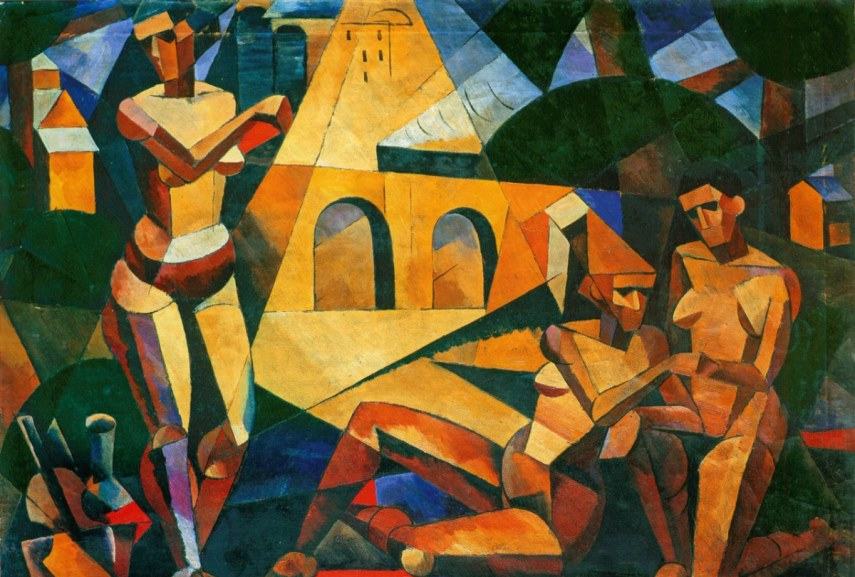
The Birth of Suprematism
We recently wrote about the emergence of Pop Art movement, where we underlined that we have to have a historical and cultural context explained in order to understand how and why certain art movements emerge. When it comes to Suprematism, it’s more about the cultural context (historical context influenced the “death” of Suprematism). This art movement was established in 1915, by Kazimir Malevich, with the exhibition Last Futurist Exhibition of Paintings 0.10, in St. Petersburg. Malevich created the movement, both by his own practice and by his own writings and concepts. He actually introduced the fundamental ideas of this movement. From the beginning until its end, it remained mostly Russia-based art movement.
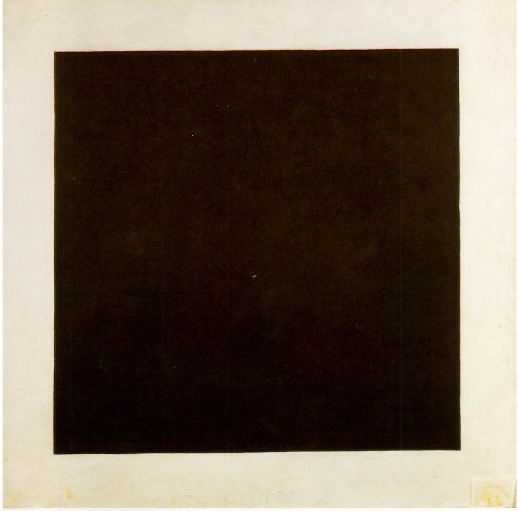
The Origins
The first works that could be related to Suprematism were created in 1913. Malevich designed background and costume sketches for Victory Over the Sun, a Futurist opera performed in St. Petersburg. At that time, the artist was still under heavy influence of Cubo-Futurism, which was the main school of painting and sculpture practiced by the Russian Futurist arts. Indeed, both Futurism and Cubism influenced the emergence of the new Suprematism in Russia. Suprematism can be seen as the logical extension of Futurism's interest in movement and Cubism's reduced forms and multiple perspectives. Finally, it completely rejected Realism art movement, which Malevich considered a distraction from the transcendental experience that the art was meant to evoke. The very name was coined to describe a movement that is superior to all the art of the past, a movement that would lead to the supremacy of pure feeling or perception in the pictorial arts.
"White on White" by artist Kazimir Malevich is probably the most representative artwork of Suprematism
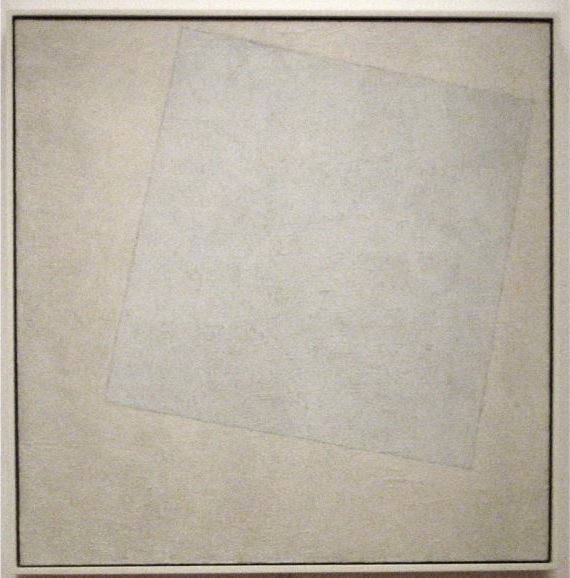
Influences
One of the crucial elements that led to the emergence of Suprematism was avant-garde poetry and literary critic. Malevich was very interested in the rules of language. He believed that there were only delicate links between words or signs and the objects they denote, and from this, he saw the possibilities for a totally abstract art. Therefore, it’s shouldn’t be surprising that the artist actually created the most radical abstract art movement ever. Malevich was also inspired by the Russian folk art, and even by the tradition of the Russian Orthodox Church.

Suprematism – Main Characteristics
What a viewer sees in a work belonging to Suprematism is simplicity and reduction. The main interest of the artists was to search for the so-called zero degree of painting, the point beyond which the medium could not go without ceasing to be art. As a consequence, they used extremely simple motifs, subjects and forms. The whole composition is focused on basic geometric forms, such as circles, squares, lines, and rectangles, painted in a limited range of colors. According to Malevich, there are three levels of progression: black, colored and white. The black phase marked the beginnings of the movement, and the zero degree of painting, as exemplified by famous Black Square. The colored stage, sometimes referred to as Dynamic Suprematism, focused on the use of color and shape to create the sensation of movement in space. Finally, Malevich himself defined Suprematism as the primacy of pure feeling in creative art. To the Suprematist, the visual phenomena of the objective world are, in themselves, meaningless; the significant thing is feeling, as such, quite apart from the environment in which it is called forth.
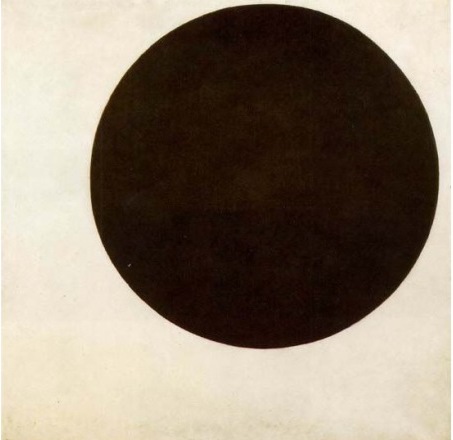
Representatives and the Death of the Movement
Among renowned representatives of Suprematism are Russian avant-garde artists from 1910s, 1920s and 1930s, such as Kseniya Boguslavskaya, Ivan Klyun, Mikhail Menkov, Ivan Puni, El Lissitzky and Olga Rozanova. Lissitzky is particularly important because he was the one who made the movement popular in the West. This artist also collaborated with the representatives of similar movements, such as De Stijl and the Bauhaus. From the mid-1920s, the Russian avant-garde (including Suprematism) experienced direct and harsh criticism from the Communist authorities, as the Socialist Realism became the official policy. So, the majority of Suprematists changed the style.
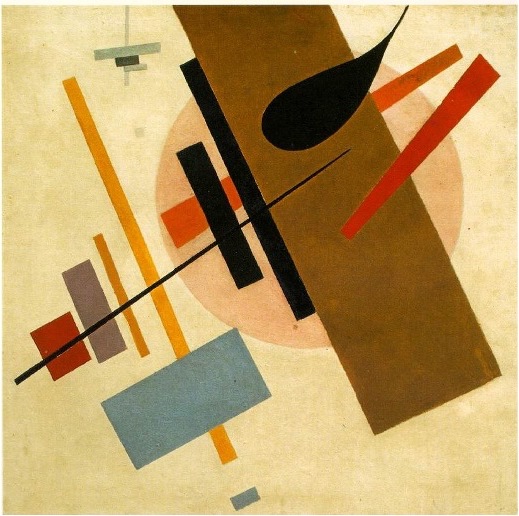
Criticism and Popularity
Suprematism has been often criticized as being nihilistic, esoteric, and it was even connected with some kind of mysticism. Why is it art? - many art critics were posing the question. Many controversies have been surrounding the whole movement, and Malevich himself (the latest one is that a racist note was found under the famous Black Square). However, the influence and the heritage has been significant, and it’s impossible to comprehend some developments in contemporary art (particularly those related to abstract art) without some basic knowledge on Suprematism. Although heavily criticized, Suprematism gained large popularity in the West as well, where a number of exhibitions were organized, and where (even today) Suprematist artworks are very popular among art collectors.

The Heritage
Suprematism still “lives”, mainly through its influence on other art movements. The Constructivism is very similar to it, but the movement that Suprematism influenced the most is certainly the geometric abstract art. Sometimes it’s very difficult to make a distinction between these two movements. Finally, the most important thing is that many artists today can be labeled as Suprematists. It seems that the spirit of Malevich’s heritage is quite influential in contemporary art practice.
Editor’s Tip: Kazimir Malevich – The Non-Objective World: The Manifesto of Suprematism
For the people who want to know more about Kazimir Malevich and his statements about art, we recommend this reading. The Manifesto of Suprematism is a book which includes Malevich’s most notable works, including the 1913 painting Black Square on White, which you could see in this post. With Suprematism being one of the 20th century most intense statements of aesthetic theory, this manifesto defined Malevich’s radical style. The declaration of purpose and intent of art written in his Manifesto in 65 statements expressed his views on creativity, the artist as a person, and art itself., and how the realism that the art-goers were expecting had no value in the type of art worth creating. For Malevich, art is supposed to express the full extent of feelings and emotions and ignore the expected results and familiarity that the gallery-frequenters demanded. In Malevich’s words, the Suprematist doesn’t observe or touch, the Suprematist feels.
Featured image: Kazimir Malevich (courtesy of 100architects.com). All Images used for illustrative purposes only.
Can We Help?
Have a question or a technical issue? Want to learn more about our services to art dealers? Let us know and you'll hear from us within the next 24 hours.

